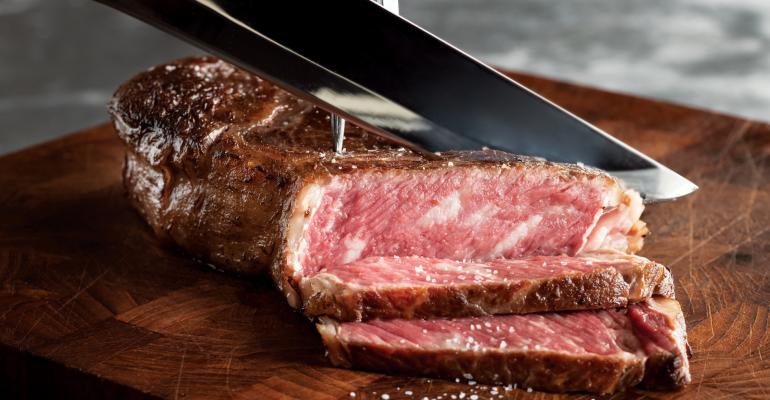Commodities inflation and cost of labor increases are two universal problems that have been plaguing the restaurant industry since the COVID-19 pandemic began to wane. But for upscale dining brands like Brazilian steakhouse chain Fogo de Chão, traffic has been growing as guests have returned to their habits of dining out, and the company has figured out a way to stay overstaffed (not just adequately staffed), while navigating supply chain costs and not having to resort to exorbitant price increases.
While it sounds like Fogo’s good fortune is too good to be true, especially when compared to their industry colleagues, CEO Barry McGowan is confident that commodities and menu flexibility and above-average staffing rates has set the stage for the brand’s enormous growth potential.
On the heels of a decade-long brand transformation — during which Fogo has added more affordable price points and expanded the carnivorous menu to add more seafood and vegetarian-friendly fare — the company is also expanding to new markets, with recent restaurant opening in Queens, New York and New Jersey. Some sites, like Brooklyn – where the company will soon be opening — have been in development for nearly a decade.
“Our biggest obstacle is that we're still small compared to large American chains at only 56 restaurants nationally,” McGowan said. “So, our awareness is at 45% compared to our peers at 90% awareness. Right now, we’re penetrating the markets we're already in and building our brand […] We’ve spent the last 10 years mapping out [our development plans], so now we see where we're going.”
McGowan said that Fogo has a few key differentiators that help push the brand forward. First, the company distinguishes itself from other steakhouse chains by offering a different experience for a different targeted demographic. Fogo de Chão's customers skew younger and more female than American steakhouses, he said, with 87% of their customers being Millennial, Gen Z and Gen X, and nearly half being female.
Secondly, the company does not see itself as a fine-dining brand and is a bit more casual and at a lower price point than typical fine-dining fare. In fact, McGowan said, the company only took 4% menu price increase over the past year, as compared with the typical 8-10% of their restaurant industry peers. McGowan said the secret to not needing to increase prices as much is menu flexibility and a focus on customer value.
“We mix shift products organically, like our lamb chops from New Zealand, with inflation and shipping problems, we switched to lamb culottes and he price difference was substantial,” he said, pointing out the major benefit of operating a Brazilian-style steakhouse where servers offer rotating cuts of meat instead of having to stick to a set menu. “We focus on price value first and make sure to add more indulgence for the guests. We never want to take anything away. And I always say we don’t take price until we’ve seen positive traffic.”
The other crucial component of Fogo de Chão's success is a people-first attitude when it comes to labor. McGowan claims that most of their restaurants have remained overstaffed, which is a far cry from the labor struggles of many operators in the quick-service and the fast-casual space. McGowan said that Fogo always tries to promote from within—creating a human capital pipeline that allows same-store sales and traffic to grow consistently, especially as stores are not overstressed and overworked.
But besides being fully staffed — which allows for a smoother guest experience and more positive working environment — Fogo’s recent traffic growth has a lot to do with the changing post-pandemic needs of potential customers.
“You can get convenience anywhere, you can order anything on your phone, so when you go out, you want to go somewhere experiential and socially engaging” McGowan said. “[…] I think traffic is building on the new occasions, our platform innovation and customer value. […] People are still discovering our brand and are fitting their occasion needs to the experience.”
Contact Joanna at [email protected]





